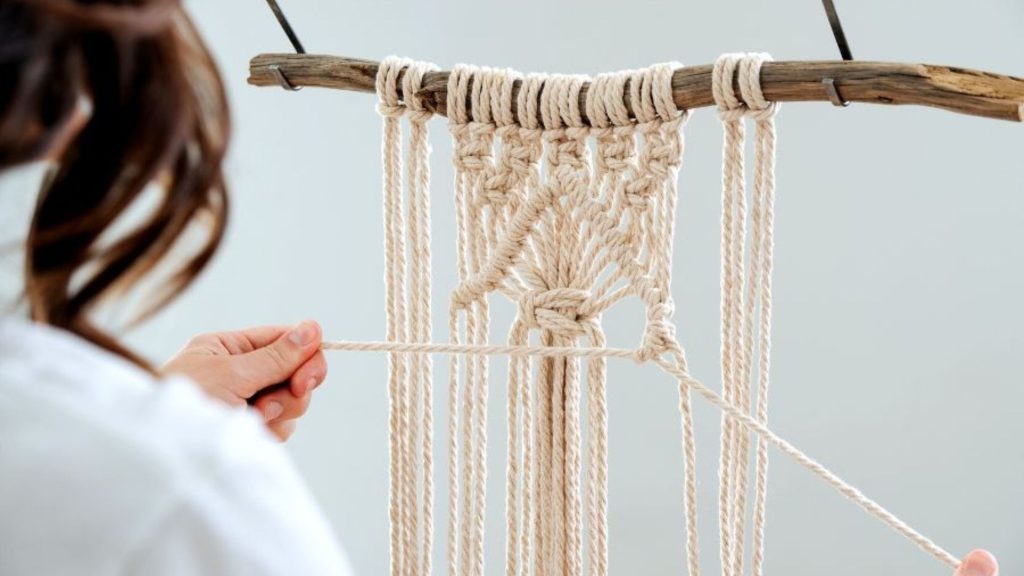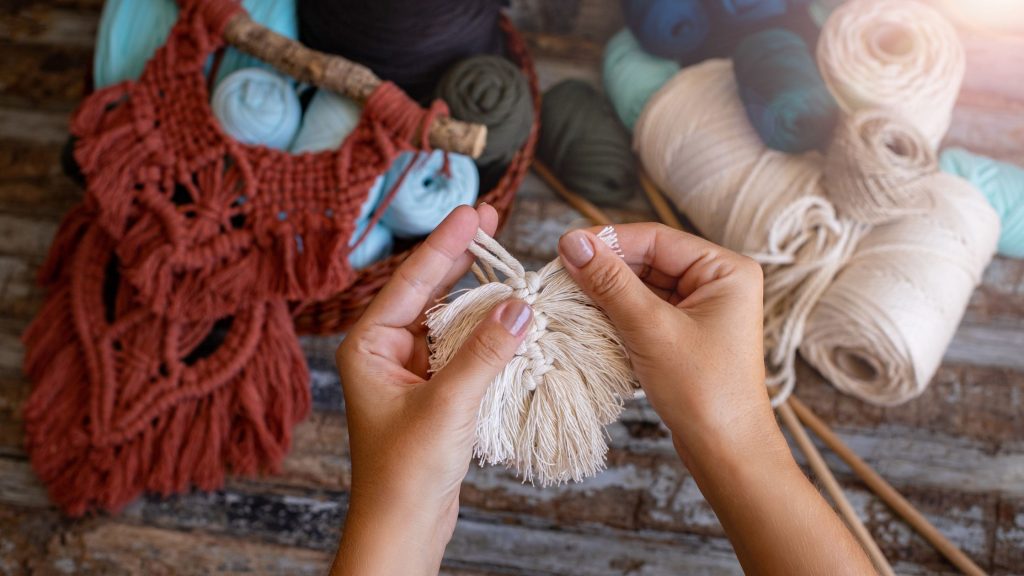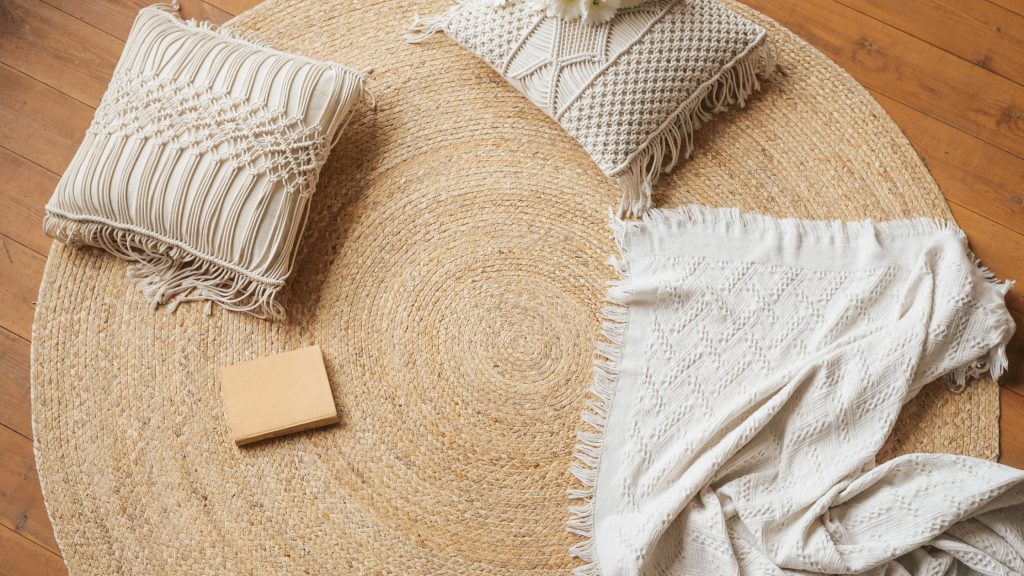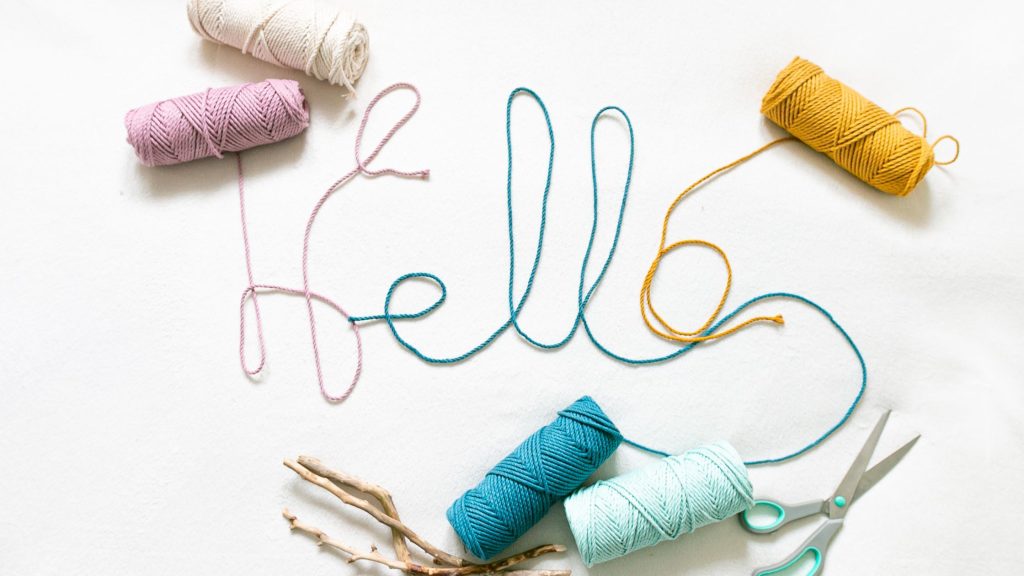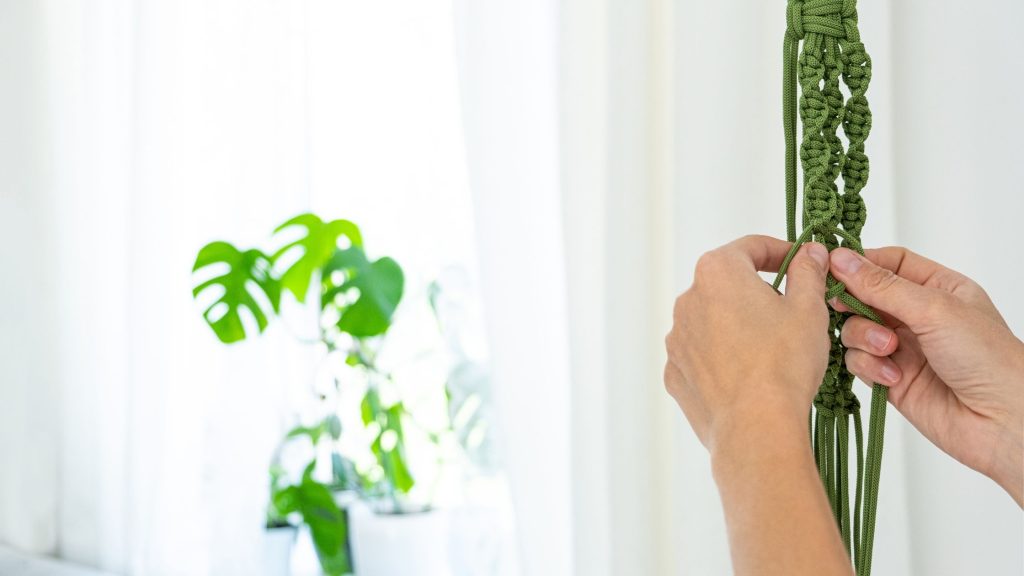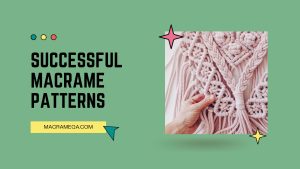Macrame, the ancient art of knotting cords to create intricate patterns, has been making a comeback in recent years. Whether you’re a seasoned macrame artist or just starting out, the desire to create unique and eye-catching patterns is always present. But what are the secrets to designing truly one-of-a-kind macrame patterns? In this article, we will explore some tips and techniques that will help you unlock your creativity and design stunning macrame pieces that are sure to impress. So grab your cords and get ready to discover the secrets behind designing unique macrame patterns.
Choosing the Right Materials
When it comes to macrame, selecting the right rope or cord is crucial for achieving the desired outcome. Different materials offer unique textures, strengths, and aesthetic qualities, so it’s important to explore the options before diving into your project.
Selecting the Right Rope or Cord
The first step in choosing the right materials is understanding the purpose of your macrame piece. Are you creating a small wall hanging or a large plant hanger? The size and weight of your project will determine the type of rope or cord you need.
For smaller pieces, a lightweight and flexible cord like cotton or hemp may be ideal. These materials are easy to work with and provide a soft, natural feel. On the other hand, if you’re creating a bigger and more substantial macrame piece, you may want to consider using a thicker and stronger rope such as nylon or jute.
Exploring Different Materials
When it comes to macrame, the possibilities are endless when it comes to materials. Beyond traditional ropes and cords, you can also experiment with unconventional materials like leather, satin, or even metallic threads. These unique materials can add a touch of luxury and sophistication to your macrame designs.
Each material brings its own distinct texture and aesthetic, so consider exploring different options to find the perfect fit for your personal style and the atmosphere you want to create.
Considering Color and Texture
Color and texture play a significant role in the overall look and feel of your macrame piece. Consider the color palette you want to work with and how it will complement the surrounding space or theme.
If you’re aiming for a bohemian or natural vibe, earth tones and neutral colors like beige, brown, and ivory can create a harmonious and calming effect. On the other hand, if you want to make a bold statement, vibrant and contrasting colors can add a vivid pop to your macrame design.
As for texture, different materials offer varying degrees of smoothness, roughness, or even shimmer. Think about how the texture of your chosen rope or cord will interact with the surrounding elements and what kind of tactile experience you want to provide.
Understanding Basic Knots
Learning the basic knots is essential for any macrame enthusiast. These knots form the foundation of your designs and allow you to create a vast array of patterns and textures.
Learning the Square Knot
The square knot is perhaps the most fundamental knot in macrame. It consists of four simple steps that result in a symmetric and sturdy knot. Understanding how to tie the square knot is fundamental as it serves as the basis for many other knots and designs.
To tie a square knot, start by creating a loop with the rope or cord on the left side. Then, take the rope on the right side and bring it over the left side rope. Pass the right side rope under the left side rope and through the loop. Finally, tighten the knot by pulling both ends of the rope in opposite directions.
Mastering the Half Hitch Knot
The half hitch knot is another essential knot in macrame. It is commonly used for adding accents and creating intricate designs. This knot is formed by wrapping a piece of rope or cord around a base cord and pulling it through the loop created.
To tie a half hitch knot, start by holding a base cord vertically. Take the working cord, wrap it around the base cord, and bring it through the loop created. Tighten the knot by pulling the working cord gently.
Exploring the Lark’s Head Knot
The lark’s head knot is a versatile knot that serves as the foundation for attaching cords to a dowel rod or other secure base. It is a simple yet effective way to create a hanging point or start your macrame project.
To tie a lark’s head knot, fold the cord in half and create a loop. Place the loop over the dowel rod or base cord, bringing the loose ends of the cord through the loop. Pull the loose ends to tighten the knot securely.
Creating Variations
Once you have mastered the basic knots, it’s time to unleash your creativity and start exploring different variations. Combining various knots, experimenting with tension and density, and incorporating additional elements like beads or charms can take your macrame designs to the next level.
Combining Different Knots
One way to create unique macrame patterns is by combining different knots. By alternating between square knots, half hitch knots, and other decorative knots, you can create intricate and visually appealing designs. Play around with the sequence and repetition of knots to achieve various textures and patterns.
Experimenting with Tension and Density
Adjusting the tension and density of your knots can significantly impact the overall look and feel of your macrame piece. A tightly knotted design can create a structured and bold look, while a looser knotting style can produce a more relaxed and organic feel. Experiment with different levels of tightness and spacing to find the right balance for your design.
Incorporating Beads or Charms
Adding beads or charms to your macrame designs is an excellent way to add a personal touch and enhance the visual appeal. You can thread them onto individual cords, incorporate them within specific knots, or even create separate sections dedicated solely to showcasing your chosen embellishments. Beads and charms come in various shapes, sizes, and materials, allowing you to customize your macrame piece according to your preferences.
Incorporating Unique Elements
To truly make your macrame designs stand out, consider incorporating unique elements that go beyond traditional ropes and cords. Fringe or tassels, feathers or shells, and even unconventional objects as accents can add an unexpected twist to your creations.
Adding Fringe or Tassels
Fringe and tassels are a popular way to add movement and texture to your macrame pieces. You can create them by cutting lengths of rope or cord and attaching them to the bottom of your design. Experiment with different lengths and thicknesses to achieve the desired aesthetic.
Integrating Feathers or Shells
For a bohemian or beach-inspired look, consider integrating feathers or shells into your macrame designs. These natural elements can create a whimsical and organic feel, bringing a touch of nature into your space. Attach them securely using knots or incorporate them within the design by looping cords around them.
Using Unconventional Objects as Accents
Think outside the box and consider using unconventional objects as accents in your macrame designs. Vintage keys, seashells, or even small crystals can provide a unique and personal touch to your creations. Use your creativity to find objects that resonate with you and incorporate them seamlessly into your macrame pieces.
Finding Inspiration
When it comes to designing unique macrame patterns, finding inspiration is key. Drawing from nature, exploring different cultures and traditions, and seeking inspiration from contemporary artists can ignite your creativity and help you craft truly distinctive designs.
Drawing from Nature
Nature is an abundant source of inspiration for macrame patterns. Take a walk in the woods, visit a botanical garden, or observe the patterns in sea shells and rocks. Notice the intricate shapes, textures, and colors nature offers, and translate them into your macrame designs.
Exploring Different Cultures and Traditions
Macrame is a craft with a rich history that spans across various cultures and traditions. Explore the macrame techniques and patterns used in different regions, such as the intricate knots found in Celtic designs or the delicate lace-like patterns of Chinese macrame. Incorporating elements from different cultures can add depth and authenticity to your macrame creations.
Seeking Inspiration from Contemporary Artists
Contemporary macrame artists are pushing the boundaries and creating innovative designs that can inspire your own work. Explore social media platforms, attend art exhibitions, or browse online galleries to discover talented macrame artists. Pay attention to their use of color, shapes, and unique knotting techniques, and let their work inspire your own creative journey.
Designing with a Purpose
Designing with a purpose can elevate your macrame pieces from mere decorations to thoughtful and meaningful creations. Considering the functionality of your macrame piece, designing for specific spaces or themes, and creating meaningful gifts or personal souvenirs are key aspects to keep in mind.
Considering the Functionality of the Macrame Piece
Beyond aesthetics, think about how your macrame piece will serve a practical purpose. Are you designing a plant hanger that needs to support the weight of a potted plant? Or perhaps a wall hanging that will serve as a sound-absorbing element in a room? Understanding the intended function of your macrame piece will guide your design choices and ensure that your creation serves its purpose effectively.
Designing for Specific Spaces or Themes
Consider the space or theme where your macrame piece will be displayed. Are you designing for a bohemian-inspired living room, a coastal-themed bathroom, or a minimalist bedroom? Aligning your design with the overall atmosphere of the space or theme will create a cohesive and harmonious aesthetic. Pay attention to colors, textures, and patterns that complement the existing decor or invoke the desired ambiance.
Creating Meaningful Gifts or Personal Souvenirs
One of the joys of macrame is the ability to create personalized and meaningful gifts or souvenirs. Customize your designs to reflect the recipient’s personality, interests, or special occasions. Incorporate their favorite colors, symbols, or meaningful charms to create a one-of-a-kind piece that holds sentimental value and serves as a lasting reminder of your thoughtfulness.
Experimenting with Shapes and Forms
Macrame is not limited to flat wall hangings or simple plant hangers. By experimenting with shapes and forms, you can create visually stunning and three-dimensional macrame pieces that captivate the eye.
Creating Geometric Patterns
Geometry offers endless possibilities for unique macrame patterns. Play with triangular, hexagonal, or circular macrame structures. Combine different knotting techniques to form intricate geometric designs that add depth and dimension to your macrame creations.
Working with Organic and Free-form Designs
Embrace the organic and free-form nature of macrame by allowing your creativity to flow. Let go of rigid patterns and guidelines, and instead, let the knots guide you. Experiment with asymmetrical designs, irregular patterns, and unpredictable textures. This approach can result in truly unique and artistic macrame pieces.
Exploring Three-dimensional Macrame
Move beyond two-dimensional designs by venturing into three-dimensional macrame creations. Sculptural wall hangings, macrame lamps, or even macrame furniture can add a striking statement to any space. Incorporating materials like wire or wooden frames can provide structural support and allow you to experiment with more elaborate and captivating forms.
Working with Color
Color is a powerful tool in macrame design, allowing you to evoke various emotions and create distinct visual experiences. Understanding color theory, exploring color combinations, and deciding between harmony or contrast can significantly impact the overall impact of your macrame pieces.
Exploring Color Theory
Color theory is the study of how different colors interact and affect each other. Understanding the basic principles of color theory can help you select the right color palette for your macrame designs. Consider the emotional and psychological associations associated with each color and how they align with the message or feeling you want to convey.
Understanding Color Combinations
Experimenting with different color combinations is essential in designing unique macrame patterns. Traditional combinations like complementary colors (opposites on the color wheel), analogous colors (adjacent on the color wheel), or monochromatic schemes (variations of a single color) all have their artistic merits. Don’t be afraid to mix and match colors to create a visually appealing and harmonious color scheme.
Creating Harmony or Contrast
Deciding between harmony or contrast is a crucial aspect of working with color in macrame design. A harmonious color scheme creates a cohesive and calming effect, ideal for creating a serene and balanced atmosphere. On the other hand, a contrasting color scheme can create a dynamic and eye-catching design, adding excitement and visual interest to your macrame pieces. Consider the mood and ambiance you want to evoke, and choose a color approach that best suits your vision.
Developing a Sense of Balance and Symmetry
Balance and symmetry are essential elements in creating visually pleasing macrame patterns. Understanding the principles of balance, creating symmetrical patterns, and achieving visual harmony help ensure that your designs captivate the eye and convey a sense of aesthetic excellence.
Understanding the Principles of Balance
Balance refers to the distribution of visual weight in a design. Achieving balance in macrame involves a careful arrangement of knots, patterns, and shapes to create a sense of equilibrium. There are three primary types of balance: symmetrical balance (equal visual weight on both sides), asymmetrical balance (unequal visual weight but still visually balanced), and radial balance (visual weight radiating from a central point). Consider the overall composition of your macrame piece and strive for balance in its arrangement.
Creating Symmetrical Patterns
Symmetry can provide a sense of order and stability in a macrame design. Creating symmetrical patterns involves mirroring identical knots or knot groups on both sides of a central line or point. Symmetry can be vertical, horizontal, or radial, depending on the desired effect. Whether you prefer a classical and balanced look or a more contemporary and modern aesthetic, symmetrical patterns can add a touch of elegance to your macrame creations.
Achieving Visual Harmony
Visual harmony is the result of a well-balanced composition, a thoughtful color palette, and a cohesive design. Achieving visual harmony in macrame involves combining various elements, such as knots, patterns, colors, and textures, in a way that creates a pleasing and unified whole. Pay attention to the relationship between different elements of your design and ensure they work together harmoniously, evoking a sense of aesthetic satisfaction for the viewer.
Documenting and Sharing Your Designs
Documenting and sharing your macrame designs not only helps you track your creative journey but also allows you to showcase your work and connect with the macrame community. Keeping a design journal or sketchbook, photographing and showcasing your work, and sharing your creativity can further inspire others and foster a sense of community.
Keeping a Design Journal or Sketchbook
A design journal or sketchbook is a valuable tool for documenting your macrame patterns, ideas, and inspirations. Use it to sketch out your designs, jot down measurements or materials used, and record any adjustments or changes you make along the way. Not only will it help you stay organized, but it also serves as a source of inspiration for future projects and a tangible record of your creative growth.
Photographing and Showcasing Your Work
Capture the beauty of your macrame designs by photographing them in a way that highlights their unique qualities. Experiment with lighting, angles, and composition to portray your pieces in the best possible light. Once you have compelling photos, share them on social media platforms, create an online portfolio, or even participate in local art exhibitions. Sharing your work allows you to receive feedback, connect with fellow macrame enthusiasts, and inspire others with your creativity.
Sharing Your Creativity with the Macrame Community
Embrace the sense of community that comes with being a macrame artist. Share your knowledge, tips, and experiences with others in the macrame community. Engage in macrame forums, join workshops or classes, and attend craft fairs or exhibitions to immerse yourself in the vibrant world of macrame. By sharing your creativity and connecting with fellow artists, you can continue to learn, grow, and find new sources of inspiration for your macrame designs.
Conclusion
Designing unique macrame patterns is a delightful and fulfilling journey that combines creativity, craftsmanship, and a keen eye for beauty. By choosing the right materials, mastering basic knots, incorporating unique elements, finding inspiration, and exploring various design aspects, you can craft macrame pieces that are truly one-of-a-kind. Embrace the infinite possibilities of macrame, and let your imagination soar as you design and create stunning macrame patterns that bring joy and inspiration to both yourself and others.



